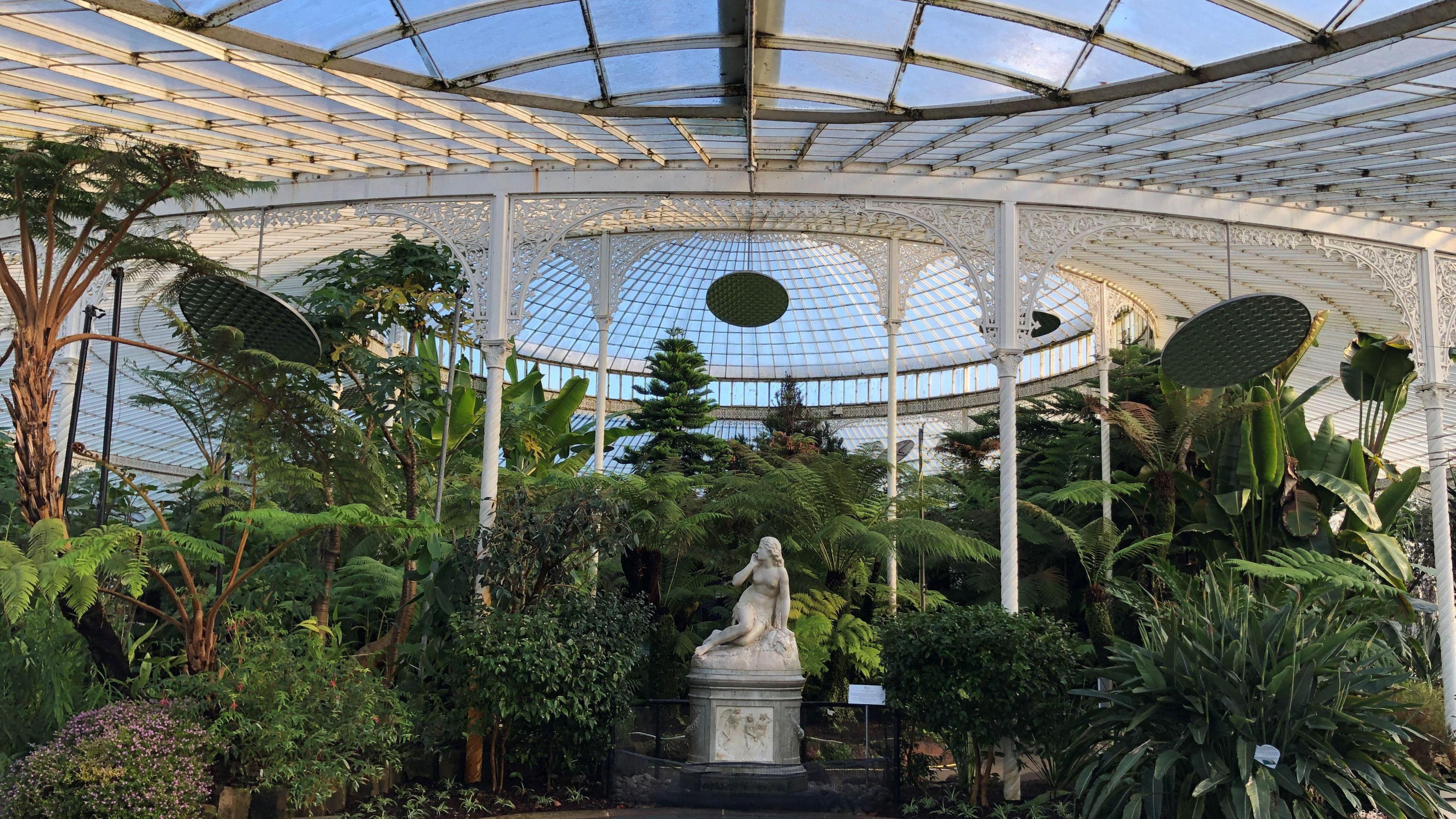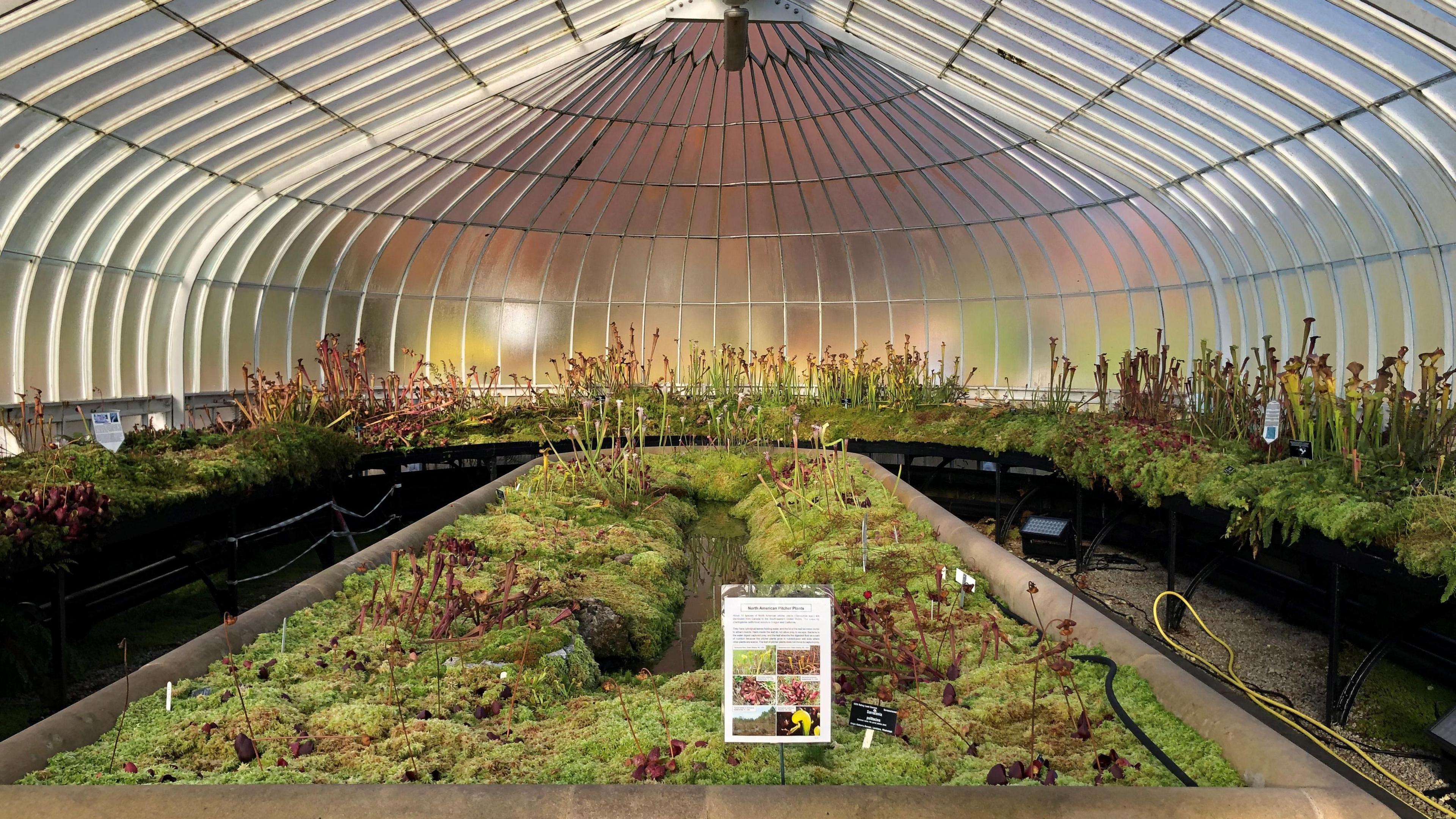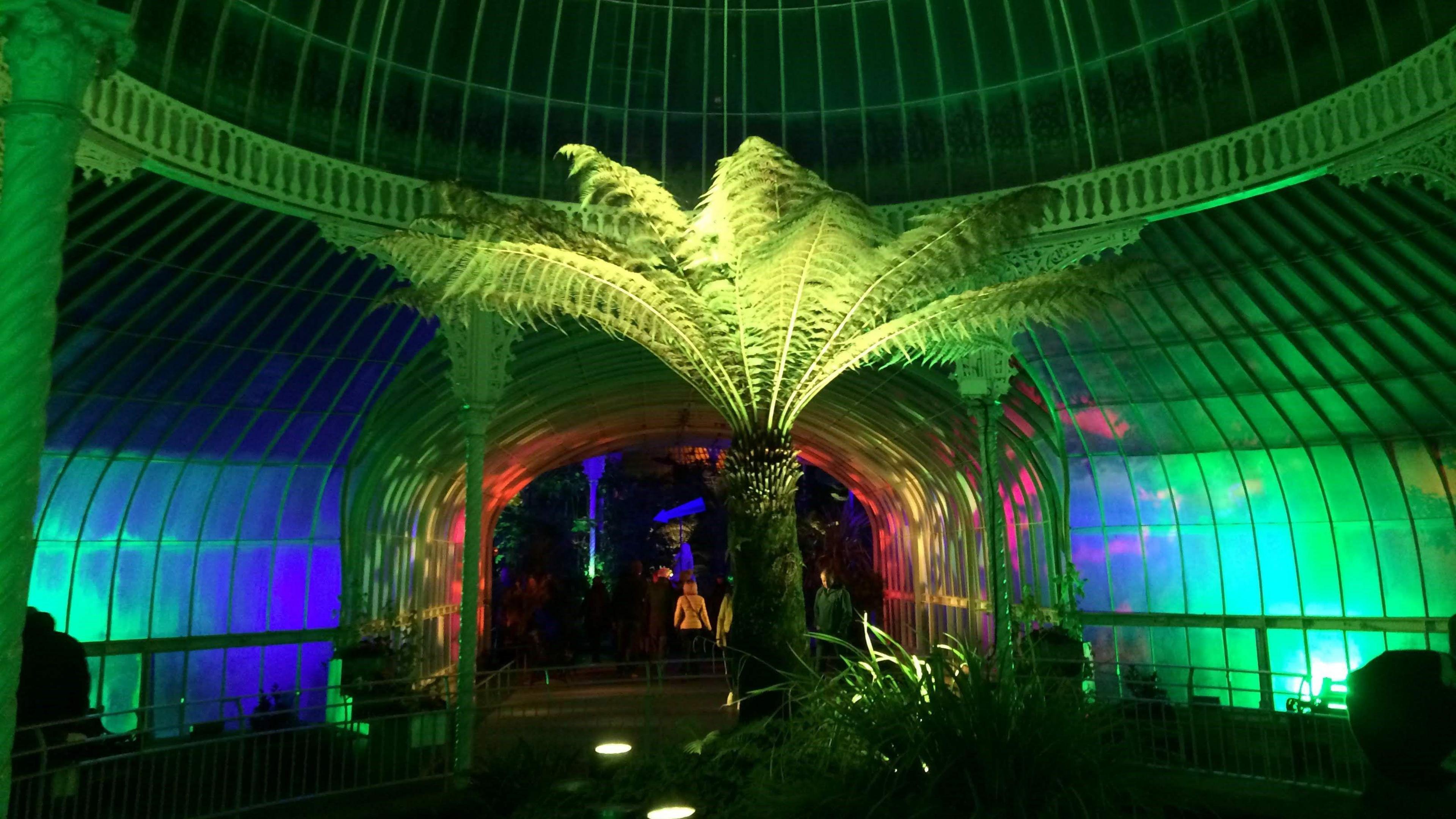Council recommends Kibble Palace entry fee pause

More than 2,000 people signed a petition to stop an entry fee being introduced
- Published
A Glasgow City Council committee has recommended a pause on plans for an entry fee for the Kibble Palace glasshouse in the city's Botanic Gardens.
A petition, signed by more than 2,000 people, was presented to the council opposing the planned entry charge of £3 for adults and £1.50 for children.
The A-listed glasshouse, famous for its exotic plants, sculptures and fish, has been free since it opened in 1873 but the council proposed a charge for entry to help plug a funding gap.
A council committee, reviewing the petition, recommended a pause in the implementation of a fee until the impact on local people could be fully explored.

The Kibble Palace has been free to enter for more than 100 years
The council had originally said the entry fee could bring in an extra £185,000 a year, based on a footfall of 100,000 people.
The petition estimated that in 2018 about 250,000 people visited the glasshouse, suggesting there would be a huge drop in footfall if charges were introduced.
Campaigner Lucy Reynolds, a Glasgow paediatrician, told the committee she would “prescribe visits to the Kibble”, which she called an “extraordinary social asset”.

The glasshouse has a section dedicated to carnivorous plants
Kibble Palace: A brief history
The iron-framed glasshouse that now sits in the heart of Glasgow's Botanic Gardens was originally designed and built in the 1860s for John Kibble, an inventor, amateur photographer and engineer.
The Kibble Palace was moved from his home at Coulport to its current location in the west end of Glasgow in 1873.
It was initially used as a public events and exhibition centre.
Two Victorian prime ministers were installed as rectors of the University of Glasgow in the glasshouse - Benjamin Disraeli in 1873 and William Ewart Gladstone 1879.
In the 1880s it became dedicated to the cultivation of temperate plants, with the tree fern collection being planted, some of which are still alive today.
In 2004 a restoration program was initiated to repair the corrosion of the iron frame, with the glasshouse being completely dismantled.
It reopened on St Andrew's day in 2006.

Frequent visitors to Kibble Palace, Katharine and Alan Welsh, who signed the petition to keep entry free, told BBC Scotland they disagreed with the proposed fee.
They said they loved going to the glasshouse and sitting down, taking in the beautiful plants and flowers, sometimes with their grandchildren.
The couple said they worried fewer people would visit if charges were introduced because there were other attractions nearby which were free, such as the Kelvingrove Museum.
Mr and Mrs Welsh said the Botanic Gardens were lovely in their own right and people may not pay to see a small part of them.
They were concerned that prices may start increasing over time which could set a precedent for other attractions.
'Shocked'
Elaine Downe, who lives nearby and regularly walks her two dogs around the grounds of the Botanic Gardens, said she was a little shocked to hear about the proposed changes.
She had been unaware of the council's proposal and said that although she does not go to Kibble Palace very often she would go even less if the fee was introduced.
Ms Downe was also worried it may start a trend and other attractions that have free entry may begin charging in the future.
An amendment put before a council committee on Thursday called for the City Administration Committee (CAC) to bring proper community consultation and equality impact assessment to the Kibble Palace fee decision.
The amendment, proposed by Scottish Greens Councillor Anthony Carroll, was agreed.